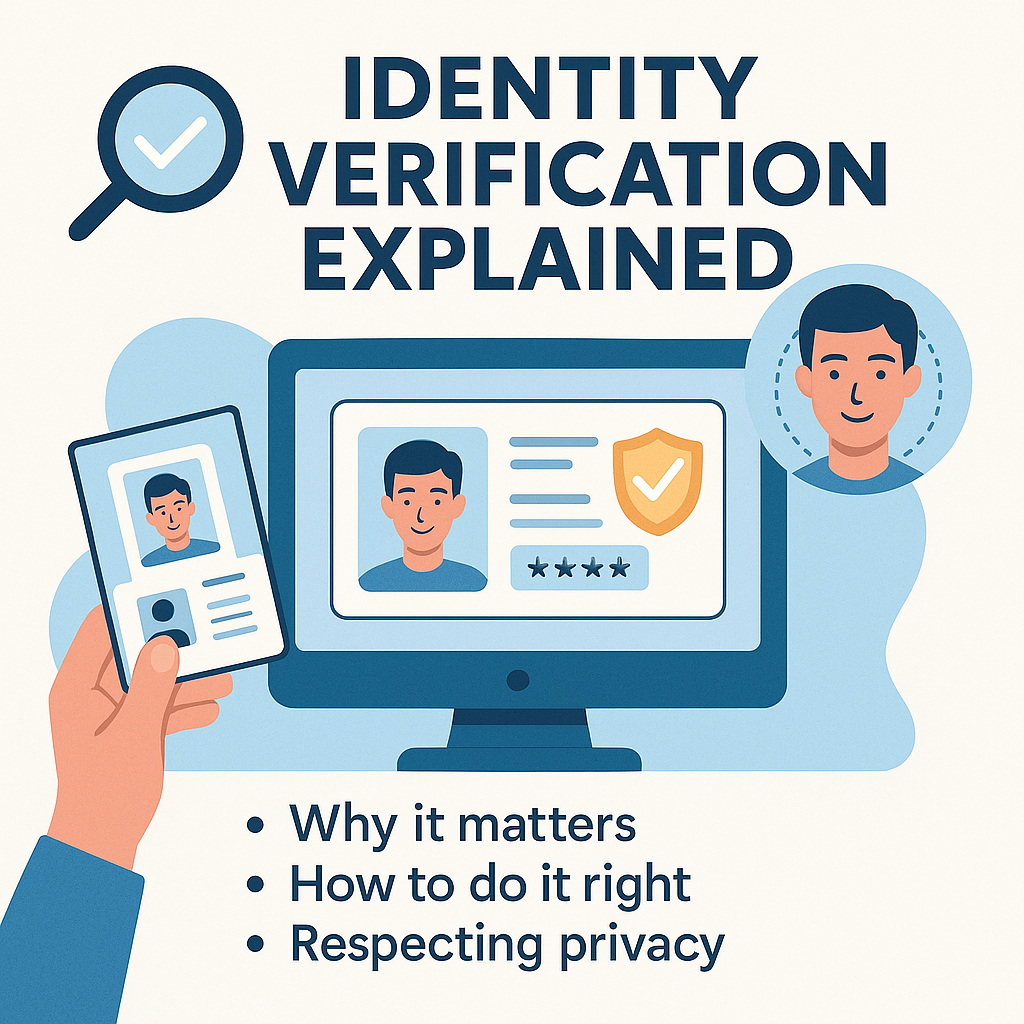
🔍 Identity Verification Explained: Why It Matters and How to Do It Right
Published: July 2025
In an era where online transactions and remote interactions have become the norm, identity verification is no longer a luxury—it’s a necessity. Whether you run a small business, freelance online, or manage a large enterprise, verifying identities securely is essential to build trust, prevent fraud, and comply with regulations.
This guide explains why identity verification matters, how it works, and how you can do it right while respecting privacy.
What Is Identity Verification?
Identity verification is the process of confirming that someone is who they claim to be. It typically involves checking personal information—like names, addresses, and identification documents—against trusted records.
Example: When you open a bank account online, the bank will request your passport and possibly a utility bill to confirm your identity.
Why Identity Verification Matters
Verifying identity helps prevent fraud, ensures compliance, and builds trust.
Preventing Fraud and Scams
Identity fraud accounted for over half of fraud cases in 2024. Robust checks make it harder for criminals to succeed.
Case Study: A fintech company reduced fraudulent account openings by 80% after implementing AI-powered verification.
Ensuring Compliance
Financial services and marketplaces are legally required to verify customers to comply with AML and KYC regulations.
Building Customer Trust
Demonstrating robust verification reassures customers that you take security seriously.
Principles of Secure Identity Verification
- Accuracy: Confirm identities reliably.
- Privacy: Collect only essential information.
- Transparency: Explain what you collect and why.
- Compliance: Align with regulations.
- Ease of Use: Ensure a smooth user experience.
Methods of Identity Verification
Document Verification
Users upload images of passports or licences. Software checks for authenticity using security features like holograms and watermarks.
Biometric Verification
Facial recognition, fingerprints, and voice analysis add a strong layer of security.
Example: Many banking apps now require a selfie to confirm identity.
Knowledge-Based Verification
Users answer questions about past addresses or financial history.
Two-Factor Authentication
Combining passwords with one-time codes helps secure ongoing access.
How to Implement Identity Verification Properly
1. Assess Your Needs
Consider what level of verification you require and what regulations apply.
2. Choose the Right Tools
Platforms like Onfido and Jumio provide secure verification solutions.
3. Make It User-Friendly
Clear instructions and mobile optimisation improve completion rates.
Case Study: A property platform reduced abandonment by 35% after simplifying verification.
4. Prioritise Data Security
Encrypt all sensitive data and store it in compliance with GDPR.
5. Communicate Clearly
Let users know exactly how their data will be used and protected.
Common Mistakes to Avoid
- Collecting excessive information.
- Neglecting accessibility for all users.
- Allowing outdated verification tools.
- Overcomplicating the process.
Example: Freelancers and Verification
Verified profiles on platforms like Upwork attract more clients. After verifying her identity, Jane, a freelance copywriter, doubled her profile views in three months.
The Future of Identity Verification
AI, blockchain, and advanced biometrics are transforming how we prove who we are. Staying ahead of these trends will keep your processes secure and compliant.
"Identity verification is the cornerstone of digital trust and security."
Conclusion
Done well, identity verification protects your business, earns customer trust, and ensures compliance. Balance security with privacy and ease of use, and you’ll build a strong, credible digital presence.
📣 Ready to strengthen your verification process?
Book a consultation with our security specialists today.